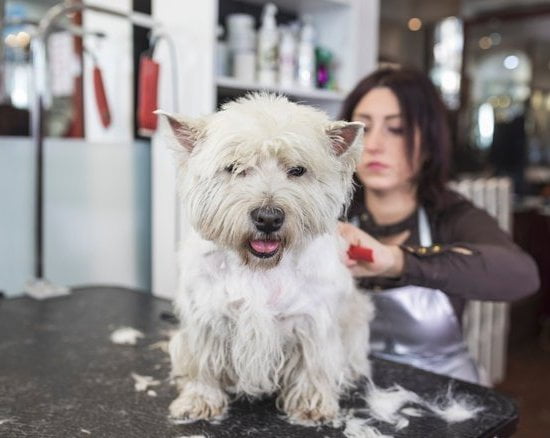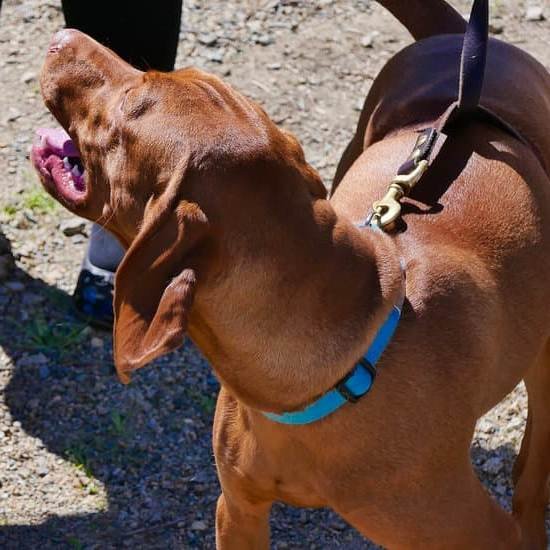Are you frustrated with your dog’s behavior during walks or struggling to train them effectively? It may be time to consider using a dog training harness. A dog training harness is an essential tool for every dog owner, designed to provide better control and support during training sessions and daily walks.
Using a dog training harness offers numerous benefits for both you and your furry companion. From reducing pulling and tugging to preventing potential injuries, a training harness can make the training process more effective and comfortable for your dog. In this article, we will explore the different types of dog training harnesses, guide you through choosing the right one for your pet, and offer tips on how to properly fit the harness.
Understanding the importance of using a training harness and learning how to benefit from it is crucial for every dog owner. Whether you have a new puppy or an older rescue, having the right tools and knowledge can significantly impact your success in training your furry friend. Stay tuned as we uncover the benefits of using a dog training harness and provide valuable insights into proper usage and training techniques.
The Benefits of Using a Dog Training Harness
Using a dog training harness can provide numerous benefits for both you and your furry friend. In this section, we will delve into the advantages of using a dog training harness and how it can improve the overall training experience for your pet.
Improved Control and Safety
One of the primary benefits of using a dog training harness is the improved control it offers over your dog. Unlike traditional collars, a harness distributes the pressure evenly across your dog’s body, reducing the risk of neck or throat injuries that can occur with excessive pulling.
This is especially beneficial for larger or more energetic dogs who may be prone to pulling during walks. Additionally, using a harness provides better control over your dog’s movements, making it easier to guide and redirect their behavior during training sessions.
Reduced Risk of Escaping
Another advantage of using a dog training harness is the reduced risk of your dog escaping from their leash. Harnesses are designed to fit securely around your dog’s body, minimizing the likelihood of them slipping out of their restraint. This added security can be particularly beneficial when working with high-energy or easily distracted dogs during training exercises.
Comfort and Support
Unlike collars that put pressure on a dog’s neck, harnesses distribute any tension across their chest and shoulders, providing a more comfortable walking experience for them while also offering support for older or injured dogs. This comfort factor can lead to a more positive association with walks and training activities, ultimately contributing to better behavior in the long run.
Incorporating a dog training harness into your pet’s routine not only enhances their safety and comfort but also provides you with greater control and peace of mind during walks and training sessions.
Understanding Different Types of Dog Training Harnesses
When it comes to choosing a dog training harness, there are several different types to consider. Each type has its own unique features and benefits, so it’s important to understand the differences in order to choose the right one for your dog. Here are some of the most common types of dog training harnesses:
- Front-clip harness: This type of harness has a ring on the chest area, which helps to redirect your dog’s attention back to you when they pull. It can be especially useful for dogs that tend to pull on the leash during walks.
- Back-clip harness: The back-clip harness has a ring on the back, which can be attached to the leash. This type is often easier to put on and take off, making it a good option for dogs that are not used to wearing a harness.
- Tightening or no-pull harness: These types of harnesses have straps that tighten around the dog’s body when they pull, discouraging this behavior. They can be effective for training dogs not to pull on the leash.
It’s important to consider your dog’s specific needs and behavior when choosing a training harness. For example, if your dog tends to pull on walks, a front-clip or tightening harness may be most effective. On the other hand, if your dog is not used to wearing a harness, a back-clip design might be more comfortable for them.
In addition to choosing between different clip locations and tightening mechanisms, you’ll also want to consider materials and fit when selecting a training harness for your dog. Some dogs may require padded or adjustable straps for extra comfort, while others may do best with lightweight or breathable materials for optimal mobility during training sessions.
How to Choose the Right Training Harness for Your Dog
When it comes to choosing the right training harness for your dog, there are a few important factors to consider in order to ensure that it is effective and comfortable for your furry friend. Here are some steps and tips to help you make the right decision:
- Consider Your Dog’s Size and Breed: It’s crucial to choose a training harness that is suitable for your dog’s size and breed. Larger dogs may require a more heavy-duty harness, while smaller breeds may need something lightweight and adjustable.
- Assess Your Dog’s Behavior: If your dog tends to pull on walks, a no-pull harness with front attachment may be the best option. For dogs with neck or back issues, a harness that distributes pressure evenly may be ideal.
- Material and Durability: Look for a harness made of high-quality, durable materials that can withstand daily use. Additionally, consider whether the material is breathable and easy to clean.
In addition to these considerations, it’s important to take into account any specific needs or challenges that your dog may have. For example, if your dog has sensitive skin, selecting a soft padded harness can help prevent chafing or irritation.
Lastly, don’t forget to consult with a professional such as a veterinarian or dog trainer for personalized recommendations based on your dog’s unique needs. With the right training harness, you’ll be one step closer to successful and enjoyable walks with your canine companion.
Step-by-Step Guide to Properly Fitting a Training Harness on Your Dog
Measuring Your Dog for the Right Fit
Before obtaining a dog training harness, it is crucial to measure your dog to ensure you get the right size. Start by measuring the circumference of your dog’s chest just behind the front legs and then measure the length from their chest to their shoulder. It is important to follow the specific sizing instructions provided by the manufacturer of the harness you are considering.
Putting on the Harness Correctly
Once you have chosen the right size harness, it is important to learn how to properly put it on your dog. First, lay the harness flat on the ground and have your dog stand over it with one leg in each strap. Then, carefully pull the harness up and fasten any buckles or clips according to the specific instructions provided with your harness.
Checking for Comfort and Adjusting as Needed
After securing the harness, make sure that it fits snugly against your dog’s body without being too tight or too loose. You should be able to fit two fingers underneath any straps without causing discomfort for your furry friend.
Also, examine for any rubbing or chafing around sensitive areas like armpits or chest. If there are any signs of discomfort, readjust the straps or consider trying a different style of dog training harness that may better suit your pet’s physique.
Remember, proper fitting is essential for both comfort and safety when using a dog training harness. By following these steps, you can ensure that your furry companion can enjoy their walks and training sessions while wearing their new gear equipped for positive reinforcement and effective behavior modification.
Common Mistakes to Avoid When Using a Dog Training Harness
When using a dog training harness, there are common mistakes that pet owners should be aware of and avoid in order to ensure the safety and effectiveness of the training process. One of the most common mistakes is choosing the wrong size or type of harness for your dog.
It is important to properly measure your dog and select a harness that fits comfortably and securely. Using a poorly fitted harness can cause discomfort, chafing, and even injury to your dog.
Another mistake to avoid is not properly adjusting the harness. Once you have chosen the right size and type of harness for your dog, it is crucial to adjust it properly to ensure a snug yet comfortable fit. Failing to do so can lead to the harness slipping off or causing discomfort during use. Additionally, it’s important to regularly check and readjust the harness as your dog grows or if they gain or lose weight.
Furthermore, one common mistake when using a dog training harness is relying solely on it for control during walks or training sessions. While a training harness can be a great tool for teaching leash manners and reducing pulling, it should be used in conjunction with proper training techniques. Relying solely on the harness without consistent training reinforcement may result in ineffective behavior correction.
It’s important for dog owners to recognize these common mistakes when using a training harness in order to ensure their pet’s safety and overall success in their training journey.
| Mistake | Consequence |
|---|---|
| Choosing wrong size/type of harness | Discomfort, chafing, risk of injury |
| Not properly adjusting the harness | Slipping off, discomfort |
| Relying solely on the harness for control | Ineffective behavior correction |
Tips for Training Your Dog to Use a Harness
Training your dog to use a harness can be a challenging but rewarding process. Whether you have a young puppy or an older dog, getting them comfortable with wearing a harness is an important step in their training and overall well-being.
One of the first steps in training your dog to use a harness is to introduce it gradually. Start by allowing them to sniff and inspect the harness before attempting to put it on them. This will help them feel more at ease with the new equipment and reduce any anxiety they may have about it.
Once your dog is comfortable with the sight and smell of the harness, start by putting it on for short periods of time around the house. Use treats and positive reinforcement to associate wearing the harness with good things, like going for a walk or receiving praise from you. It’s important to take this process slowly and not rush your dog into wearing the harness for extended periods until they are completely at ease with it.
Consistency is key when training your dog to use a harness. Make sure to practice putting on and taking off the harness regularly, even when you’re not planning on taking your dog out for a walk. This will help reinforce their positive association with wearing the harness and make it a natural part of their routine.
| Tips for Training Your Dog to Use a Harness | Benefits |
|---|---|
| Introduce the harness gradually | Reduced anxiety and discomfort for pets |
| Use positive reinforcement during training | Improved behavior and willingness to wear the harness |
| Practice consistently | Establishes a routine and reinforces positive associations |
Real-Life Success Stories
Many dog owners have experienced incredible transformation in their pets’ behaviors after using a dog training harness. One such success story is from Sarah, who has a high-energy Border Collie named Max. Max used to pull incessantly on walks, making it nearly impossible for Sarah to enjoy their time together.
After consulting with a professional trainer, she invested in a no-pull dog training harness. The difference was almost immediate – Max’s pulling reduced significantly, and he became more focused and responsive during walks. This not only made the walks more enjoyable for Sarah but also improved Max’s overall behavior and obedience.
Another example of how a training harness transformed problematic behaviors is from Mark, who owns a rescue dog named Luna. Luna was fearful and reactive towards other dogs, which made it challenging for Mark to take her out in public spaces.
Through positive reinforcement training and the use of a front-clip dog training harness, Luna’s reactivity decreased over time. The harness allowed Mark to have better control over Luna while providing her with comfort and security during encounters with other dogs.
These real-life success stories highlight the profound impact that the right dog training harness can have on solving problematic behaviors in dogs. By choosing the appropriate type of harness and implementing positive reinforcement techniques, dog owners like Sarah and Mark were able to transform their pets’ behaviors for the better.
Conclusion
In conclusion, a dog training harness is an essential tool for every dog owner who wants to effectively train their furry companion. The benefits of using a dog training harness are numerous, from providing better control and preventing pulling to reducing the risk of injury for both the dog and the owner. By understanding the different types of training harnesses and choosing the right one for your dog, you can set them up for success in their training journey.
Properly fitting a training harness on your dog is crucial to ensure their comfort and safety during walks and training sessions. Following a step-by-step guide can help you ensure that the harness fits correctly and does not cause any discomfort or chafing. Additionally, it’s important to be mindful of common mistakes to avoid when using a dog training harness, such as choosing the wrong size or using improper fitting techniques.
Frequently Asked Questions
Do Dog Trainers Recommend Harnesses?
Dog trainers often recommend harnesses for a variety of reasons. They can provide better control over the dog, reduce pulling on the leash, and prevent neck injuries that can occur with traditional collars.
What Is the Best Dog Harness for Training?
The best dog harness for training will depend on the individual dog and their specific needs. However, many trainers recommend harnesses with front clip attachments to discourage pulling and promote better walking manners.
Can You Train a Dog Using a Harness?
Yes, you can train a dog using a harness. In fact, many trainers prefer using harnesses because they allow for more control and prevent potential injury to the dog’s neck during training exercises. It’s important to choose the right type of harness and introduce it gradually to the dog for successful training.

Welcome to the blog! I am a professional dog trainer and have been working with dogs for many years. In this blog, I will be discussing various topics related to dog training, including tips, tricks, and advice. I hope you find this information helpful and informative. Thanks for reading!





